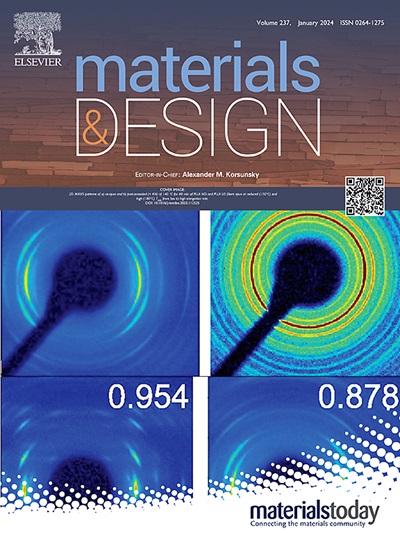Mechanical properties and microstructure of wire laser metal deposited austenitic stainless steel
IF 7.6
2区 材料科学
Q1 MATERIALS SCIENCE, MULTIDISCIPLINARY
引用次数: 0
Abstract
Laser metal deposition (LMD) is a metal 3D printing method that enables the efficient and cost-effective production of large-scale components, rendering it increasingly attractive for civil engineering applications. However, the scarcity of data and lack of knowledge of the material response and geometric variability of LMD steels is inhibiting adoption of this manufacturing method in the construction industry. To address this, a comprehensive experimental investigation into the geometry, mechanical properties and microstructural characteristics of LMD plates made from ER 308LSi stainless steel has been carried out and is presented herein. Laser scanning, tensile testing and microstructural analyses were conducted on a series of coupons of different thicknesses (2 mm and 8 mm), printing strategies, surface conditions and orientations. The results indicated low geometric irregularity, with both as-built and machined coupons displaying nearly identical mechanical properties. The thinner specimens had lower strengths, mainly attributed to their larger grain sizes. Significant anisotropy was observed from the mechanical tests on the thinner specimens, explained by a strong crystallographic texture observed in the microstructure. Overall, the examined material exhibited good mechanical behaviour and geometric consistency. Finally, a constitutive modelling approach previously applied to wire arc additively manufactured (WAAM) stainless steel was successfully adapted to characterise the anisotropic behaviour of LMD stainless steel in both the elastic and inelastic material ranges. The findings highlight the potential for using LMD in construction, offering a viable means of fabricating large-scale metal components with sound mechanical performance.

求助全文
约1分钟内获得全文
求助全文
来源期刊

Materials & Design
Engineering-Mechanical Engineering
CiteScore
14.30
自引率
7.10%
发文量
1028
审稿时长
85 days
期刊介绍:
Materials and Design is a multi-disciplinary journal that publishes original research reports, review articles, and express communications. The journal focuses on studying the structure and properties of inorganic and organic materials, advancements in synthesis, processing, characterization, and testing, the design of materials and engineering systems, and their applications in technology. It aims to bring together various aspects of materials science, engineering, physics, and chemistry.
The journal explores themes ranging from materials to design and aims to reveal the connections between natural and artificial materials, as well as experiment and modeling. Manuscripts submitted to Materials and Design should contain elements of discovery and surprise, as they often contribute new insights into the architecture and function of matter.
 求助内容:
求助内容: 应助结果提醒方式:
应助结果提醒方式:


